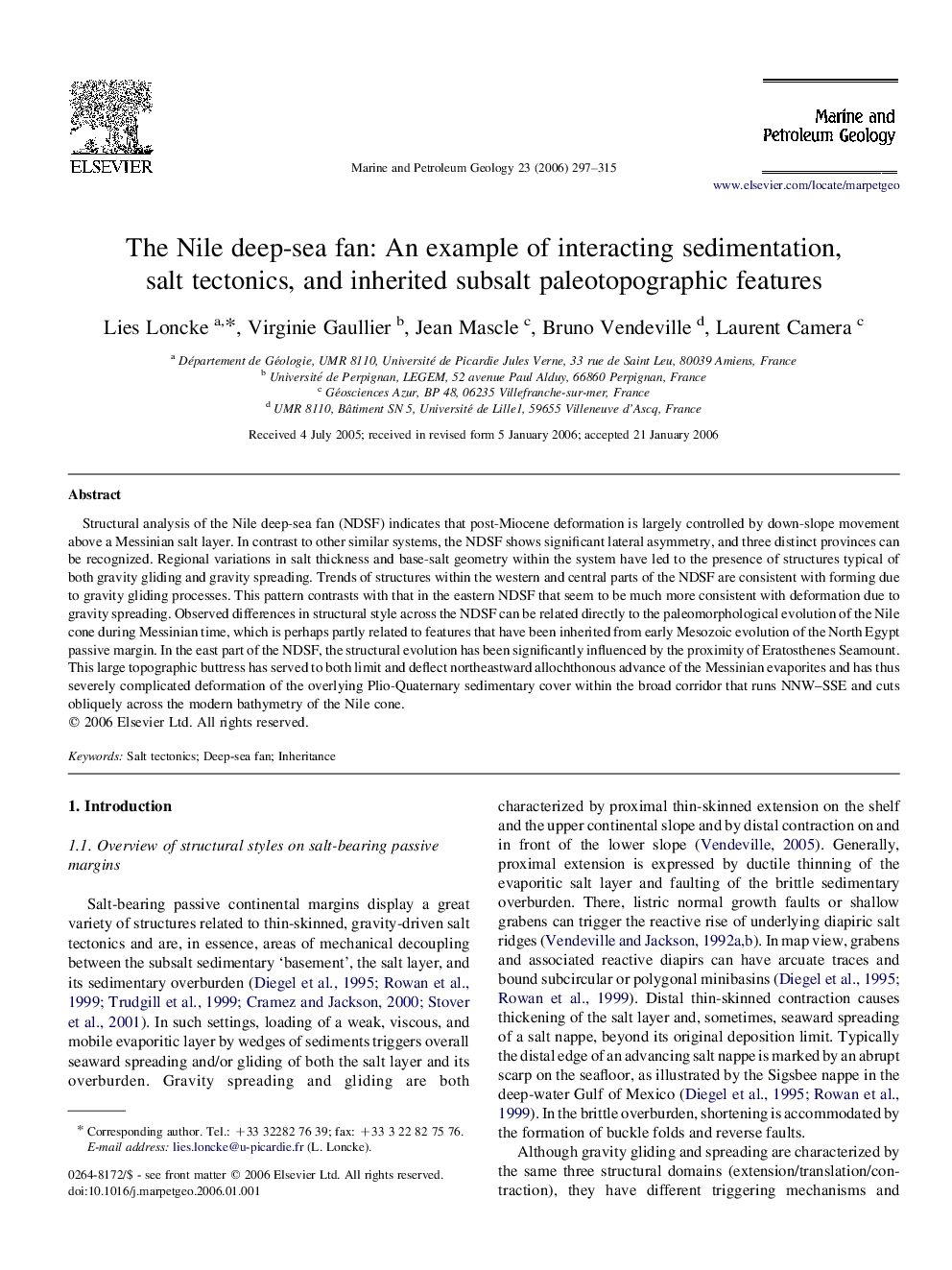| Article ID | Journal | Published Year | Pages | File Type |
|---|---|---|---|---|
| 4696590 | Marine and Petroleum Geology | 2006 | 19 Pages |
Structural analysis of the Nile deep-sea fan (NDSF) indicates that post-Miocene deformation is largely controlled by down-slope movement above a Messinian salt layer. In contrast to other similar systems, the NDSF shows significant lateral asymmetry, and three distinct provinces can be recognized. Regional variations in salt thickness and base-salt geometry within the system have led to the presence of structures typical of both gravity gliding and gravity spreading. Trends of structures within the western and central parts of the NDSF are consistent with forming due to gravity gliding processes. This pattern contrasts with that in the eastern NDSF that seem to be much more consistent with deformation due to gravity spreading. Observed differences in structural style across the NDSF can be related directly to the paleomorphological evolution of the Nile cone during Messinian time, which is perhaps partly related to features that have been inherited from early Mesozoic evolution of the North Egypt passive margin. In the east part of the NDSF, the structural evolution has been significantly influenced by the proximity of Eratosthenes Seamount. This large topographic buttress has served to both limit and deflect northeastward allochthonous advance of the Messinian evaporites and has thus severely complicated deformation of the overlying Plio-Quaternary sedimentary cover within the broad corridor that runs NNW–SSE and cuts obliquely across the modern bathymetry of the Nile cone.
